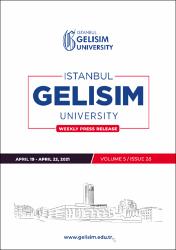| dc.description.abstract | BY A DOYEN - Scientific Definition and Importance of Mysterious Words such as Aroma and Flavor that Increase the Consumability of Foods
Food has always been in the first place in people’s struggle for a comfortable, healthy and peaceful life. As long as people live, they are in constant need of food and water. However, the provision of this need as food and water is not just about eating and drinking them. Every person takes great pleasure in distinguishing between pleasing and unpleasant habits, eating and drinking according to their culture; In other words, they choose the one they like the most. Consumers take the aroma of a food as the main criteria in the selection, acceptance and preparation when necessary, followed by the appearance and texture, which are two sensory properties. Man desires the constant consumption of many foods with beautiful aromas. Even a starving person does not want to consume a food with an unpleasant aroma and taste. In other words, insufficient flavor and aroma is the main reason for a food to be rejected.
Flavors, which have an important place in choosing foods, consist of two different words. One of them is the taste and the other is the smell. There are also components that contain both properties. Flavor-forming components are those that are perceived indirectly by the tongue, those that are generally non-volatile at room temperature, polar and therefore water-soluble. Odor-emitting components are perceived directly by the nose and are volatile at room temperature. Flavors, which are considered as a purchase factor rather than their nutritional value, safety and price, are substances that give foods a special taste. Some flavoring agents are added to foods. These are used to add a different aroma to non-aromatic foods, to give the material a different aroma than its own, to strengthen the weak aroma, to restore the aroma lost during the process, to mask the unwanted aroma, to modify the existing aroma profile, to eliminate the differences and changes in natural materials due to seasonal dependence, and to add flavor to food items from natural aroma materials that cannot be used technologically and to continue production when the use of natural flavors is expensive or not commercially possible. | en_US |



















